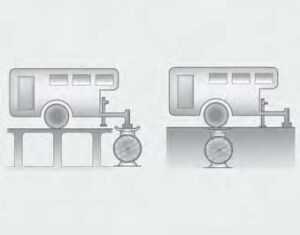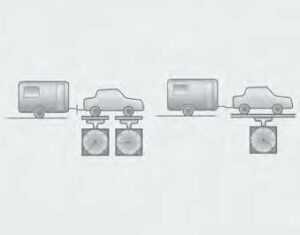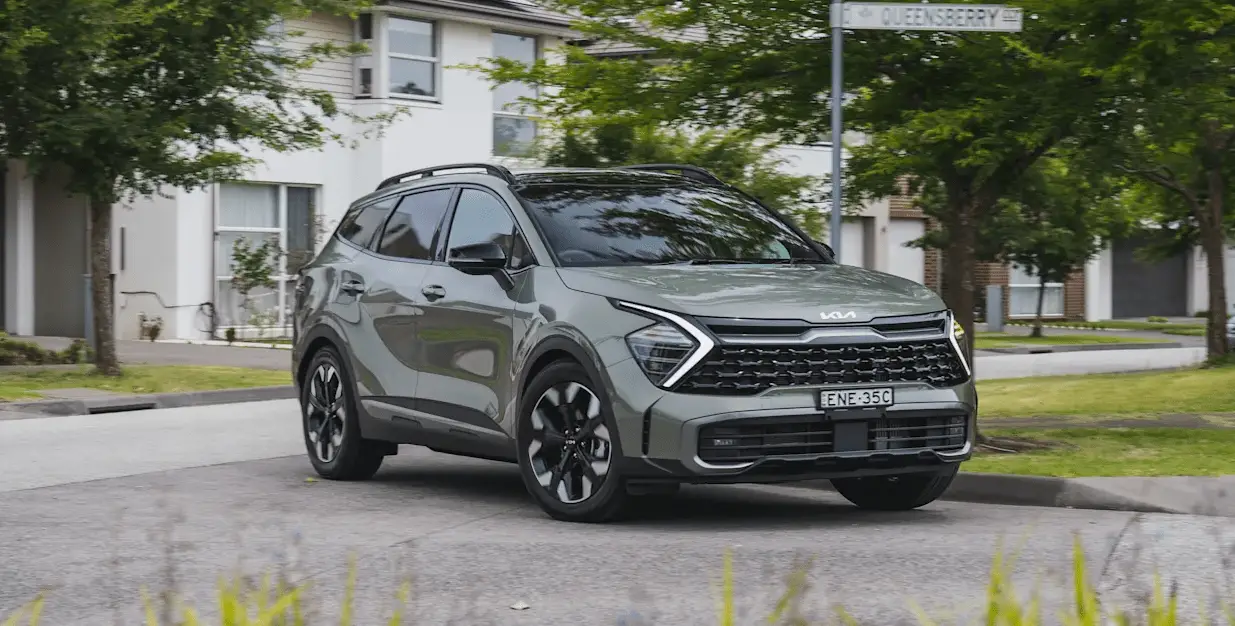Kia Sportage 2022 Trailer Towing
The 2022 Kia Sportage offers a capable and versatile towing experience, making it an ideal choice for those with a wide range of hauling needs. With a well-engineered towing package, the Sportage provides a towing capacity of up to [insert towing capacity], making it suitable for trailers, boats, and small recreational vehicles. Equipped with features like a robust chassis, trailer stability assist, and available trailer hitch options, the Sportage ensures confident and safe towing, while its spacious interior and comfortable cabin make long journeys with trailers a breeze. Whether you’re embarking on a family camping trip or transporting gear for outdoor adventures, the 2022 Kia Sportage is ready to handle the demands of towing with both convenience and capability.
2023 KIA SPORTAGE Specs, Price, Features and Mileage (Brochure)
Trailer Towing
If you are considering towing your vehicle, you should first check with your state’s Department of Motor Vehicles to determine the legal requirements. Since laws vary the requirements for towing trailers, cars, or other types of vehicles or apparatus may differ. Ask an authorized Kia dealer for further details before towing.
WARNING – Towing a trailer
Always check your towing equipment to confirm the correct equipment size and installation before use. Using incompatible or incorrectly installed trailer equipment can affect the vehicle operation and endanger you and your passengers. You may require an additional wiring harness connector to install a trailer hitch. Please contact an authorized Kia dealer for more details.
WARNING – Weight limits
Before towing, make sure the total trailer weight, GCW (gross combination weight), GVW (gross vehicle weight), GAW (gross axle weight) and trailer tongue load are all within the limits.
CAUTION – Trailer installation
Follow the instructions in this section when pulling a trailer. Pulling a trailer improperly can damage your vehicle and result in costly repairs not covered by your warranty. Your vehicle can tow a trailer. To identify what the vehicle trailering capacity is for your vehicle, you should read the information in “Weight of the trailer” that appears later in this section. Remember that trailering is different than just driving your vehicle by itself. Trailering means changes in handling, durability, and fuel economy. Successful, safe trailering requires correct equipment, and it has to be used properly. This section contains many time-tested, important trailering tips and safety rules. Many of these are important for your safety and that of your passengers. Please read this section carefully before you pull a trailer. Load-pulling components such as the engine, transmission, wheel assemblies, and tires are forced to work harder against the load of the added weight. The engine is required to operate at relatively higher speeds and under greater loads. This additional burden generates extra heat. The trailer also adds considerably to wind resistance, increasing the pulling requirements.
Hitches
It’s important to have the correct hitch equipment. Crosswinds, large trucks going by, and rough roads are a few reasons why you’ll need the right hitch. Here are some rules to follow:
- Will you have to make any holes in the body of your vehicle when you install a trailer hitch? If you do, then be sure to seal the holes later when you remove the hitch.
If you don’t seal them, deadly carbon monoxide (CO) from your exhaust can get into your vehicle, as well as dirt and water. - The bumpers on your vehicle are not intended for hitches. Do not attach rental hitches or other bumper-type hitches to them. Use only a frame-mounted hitch that does not attach to the bumper.
- Kia trailer hitch accessory is available at an authorized Kia dealer.
Safety chains
You should always attach chains between your vehicle and your trailer. Cross the safety chains under the tongue of the trailer so that the tongue will not drop to the road if it becomes separated from the hitch.
Instructions about safety chains may be provided by the hitch manufacturer or by the trailer manufacturer. Follow the manufacturer’s recommendation for attaching safety chains. Always leave just enough slack so you can turn with your trailer. And, never allow safety chains to drag on the ground.
Trailer brakes
If your trailer is equipped with a braking system, make sure it conforms to your state’s regulations and that it is installed and operating correctly. If your trailer weight exceeds the maximum allowed weight without trailer brakes, then the trailer will also require its own brakes as well. Be sure to read and follow the instructions for the trailer brakes so you’ll be able to install, adjust, and maintain them properly. Don’t tap into or modify your vehicle’s brake system.
WARNING – Trailer brakes
Do not use a trailer with its own brakes unless you are absolutely certain that you have properly set up the brake system. This is not a task for amateurs. Use an experienced, competent trailer shop for this work.
Driving with a trailer
Towing a trailer requires a certain amount of experience. Before setting out for the open road, you must get to know your trailer. Acquaint yourself with the feel of handling and braking with the added weight of the trailer. And always keep in mind that the vehicle you are driving is now a good deal longer and not nearly as responsive as your vehicle is by itself. Before you start, check the trailer hitch and platform, safety chains, electrical connector(s), lights, tires, and mirror adjustment. If the trailer has electric brakes, start your vehicle and trailer moving and then apply the trailer brake controller by hand to be sure the brakes are working. This lets you check your electrical connection at the same time. During your trip, check occasionally to be sure that the load is secure, and that the lights and any trailer brakes are still working.
The following distance
Stay at least twice as far behind the vehicle ahead as you would when driving your vehicle without a trailer. This can help you avoid situations that require heavy braking and sudden turns.
Passing
You’ll need more passing distance up ahead when you’re towing a trailer. And, because of the increased vehicle length, you’ll need to go much farther beyond the passed vehicle before you can return to your lane. Due to the added load to the engine when going uphill the vehicle may also take longer to pass than it would on flat ground.
Backing up
Hold the bottom of the steering wheel with one hand. Then, to move the trailer to the left, just move your hand to the left. To move the trailer to the right, move your hand to the right. Always back up slowly and, if possible, have someone guide you.
Making turns
When you’re turning with a trailer, make wider turns than normal. Do this so your trailer won’t strike soft shoulders, curbs, road signs, trees, or other objects near the edge of the road. Avoid jerky or sudden maneuvers. Signal well in advance before turning or lane changes.
Turn signals when towing a trailer
When you tow a trailer, your vehicle has to have a different turn signal flasher and extra wiring. The green arrows on your instrument panel will flash whenever you signal a turn or lane change. Properly connected, the trailer lights will also flash to alert other drivers you’re about to turn, change lanes, or stop. When towing a trailer, the green arrows on your instrument panel will flash for turns even if the bulbs on the trailer are burned out. Thus, you may think drivers behind you are seeing your signals when, in fact, they are not. It’s important to check occasionally to be sure the trailer bulbs are still working. You must also check the lights every time you disconnect and then reconnect the wires. Do not connect a trailer lighting system directly to your vehicle’s lighting system. Use only an approved trailer wiring harness. An authorized Kia dealer can assist you in installing the wiring harness.
CAUTION Always use an approved trailer wiring harness. Failure to use an approved trailer wiring harness could result in damage to the vehicle’s electrical system.
Driving on grades
Reduce speed and shift to a lower gear before you start down a long or steep downgrade. If you don’t shift down, you might have to use your brakes so much that they would get hot and no longer operate efficiently. On a long uphill grade, shift down and reduce your speed to around 45 mph (70 km/h) to reduce the possibility of engine and transmission overheating. If your trailer weighs more than the maximum trailer weight without trailer brakes and you have an automatic transmission, you should drive in D (Drive) when towing a trailer. Operating your vehicle in D (Drive) when towing a trailer will minimize heat build-up and extend the life of your transmission.
Towing uphill
When towing a trailer on steep grades (in excess of 6%) pay close attention to the engine coolant temperature gauge to ensure the engine does not overheat. If the needle of the coolant temperature gauge moves across the dial towards “H” (HOT), pull over and stop as soon as it is safe to do so, and allow the engine to idle until it cools down. You may proceed once the engine has cooled sufficiently. You must decide on driving speed depending on trailer weight and uphill grade to reduce the possibility of engine and transmission overheating.
Parking on hills
Generally, if you have a trailer attached to your vehicle, you should not park your vehicle on a hill. People can be seriously or fatally injured, and both your vehicle and the trailer can be damaged if they unexpectedly roll downhill. However, if you ever have to park your trailer on a hill, here’s how to do it:
- Pull the vehicle into the parking space. Turn the steering wheel in the direction of the curb (right if headed downhill, left if headed uphill).
- If the vehicle has an automatic transmission, place the vehicle in P (Park).
- Set the parking brake and shut off the engine.
- Place chocks under the trailer wheels on the downhill side of the wheels.
- Start the vehicle, hold the brakes, shift to neutral, release the parking brake, and slowly release the brakes until the trailer chocks absorb the load.
- Reapply the brakes, reapply the parking brake, and shift the vehicle to P (Park) for automatic transmission.
- Shut off the vehicle and release the vehicle brakes but leave the parking brake set.
When you are ready to leave after parking on a hill
- With the automatic transmission in P (Park), apply your brakes and hold the brake pedal down while you:
- Start your engine;
- Shift into gear; and
- Release the parking brake.
- Slowly remove your foot from the brake pedal.
- Drive slowly until the trailer is clear of the chocks.
- Stop and have someone pick up and store the chocks.
Maintenance when trailer towing
Your vehicle will need service more often when you regularly pull a trailer. Important items to pay particular attention to include engine oil, automatic transmission fluid, axle lubricant, and cooling system fluid. Brake condition is another important item to frequently check. Each item is covered in this manual, and the Index will help you find them quickly. If you’re trailering, it’s a good idea to review these sections before you start your trip. Don’t forget to also maintain your trailer and hitch. Follow the maintenance schedule that accompanies your trailer and check it periodically. Preferably, conduct the check at the start of each day’s driving. Most importantly, all hitch nuts and bolts should be tight.
CAUTION – Air condition
Do not use the A/C while using your vehicle to tow uphill. Due to higher load during trailer usage, overheating might occur on hot days or during uphill driving. When towing check transmission fluid more frequently.
If you do decide to pull a trailer
Here are some important points if you decide to pull a trailer:
- Consider using a sway control. You can ask a hitch dealer about sway control.
- Do not do any towing with your vehicle during its first 1,200 miles (2,000 km) in order to allow the engine to properly break in. Failure to heed this caution may result in serious engine or transmission damage.
- When towing a trailer, be sure to consult an authorized Kia dealer for further information on additional requirements such as a towing kit, etc.
- Always drive your vehicle at a moderate speed (less than 60 mph (100 km/h)).
- On a long uphill grade, do not exceed 45 mph (70 km/h) or the posted towing speed limit, whichever is lower.
The chart contains important considerations that have to do with weight:
| Item | Theta II 2.0L T-GDI | Theta II 2.4L GDI | |
| Maximum trailer weight | Without brake System | 1,650 lbs (748 kg) |
1,650 lbs (748 kg) |
| With brake System | 2,000 lbs (907 kg) |
2,000 lbs (907 kg) |
|
| Maximum tongue weight | 220 lbs (100 kg) |
220 lbs (100 kg) |
|
- To identify what the vehicle trailering capacity is for your vehicle, you should read the information in “Weight of the Trailer” that appears later in this section.
Weight of the trailer
What is the maximum safe weight of a trailer? It should never weigh more than the maximum trailer weight with trailer brakes. But even that can be too heavy. It depends on how you plan to use your trailer. For example, speed, altitude, road grades, outside temperature and how often your vehicle is used to pull a trailer are all important. The ideal trailer weight can also depend on any special equipment that you have on your vehicle.
Weight of the trailer tongue
The tongue load of any trailer is an important weight to measure because it affects the total gross vehicle weight (GVW) of your vehicle. This weight includes the curb weight of the vehicle, any cargo you may carry in it, and the people who will be riding in the vehicle. And if you will tow a trailer, you must add the tongue load to the GVW because your vehicle will also be carrying that weight. After you’ve loaded your trailer, weigh the trailer and then the tongue, separately, to see if the weights are proper. If they aren’t, you may be able to correct them simply by moving some items around in the trailer.
WARNING – Trailer
Always follow the loading instructions provided with your trailer. Improper loading can affect vehicle operation and result in an accident.
FAQ
The maximum towing capacity of the 2022 Kia Sportage varies depending on the engine and drivetrain configuration but can range from approximately 2,000 to 5,000 pounds (907 to 2,268 kilograms).
A trailer hitch is typically not included as standard equipment but can be purchased separately or added as an option.
Yes, you can often install an aftermarket trailer hitch on the Sportage to accommodate your towing needs.
The Sportage may offer a trailer brake controller as an available feature, but it’s not standard equipment on all trims.
The 2022 Kia Sportage may offer trailer stability assist and other safety features to enhance towing stability and control.
Towing mirrors are not typically included as standard equipment, but you can purchase towing mirrors separately to improve visibility when towing.
The Sportage is suitable for towing a variety of trailers, including utility trailers, camping trailers, and small boats. The specific type and weight of the trailer should be within Sportage’s towing capacity.
In most regions, a standard driver’s license is sufficient for towing with the Sportage, as long as you stay within the legal weight limits.
You can tow a small camper or RV that falls within the Sportage’s towing capacity, but larger and heavier RVs may require a more powerful towing vehicle.
When loading a trailer, distribute the weight evenly and make sure the load is properly secured. Avoid exceeding the Sportage’s towing capacity.
Regularly inspect the trailer hitch and connections, check trailer tires, and service the vehicle as recommended in the owner’s manual.
Towing typically reduces fuel efficiency due to the additional load on the engine. Expect lower mileage when towing heavy loads.
Towing regulations vary by region, so it’s crucial to familiarize yourself with local laws, including trailer weight limits, speed limits, and safety requirements.
In many regions, trailers are required to have functioning lights and, in some cases, brakes. Ensure your trailer complies with local regulations.
Some dealerships or aftermarket suppliers offer towing accessory packages that include items like trailer hitches, wiring harnesses, and towing mirrors.
Useful Link
View Full User Guide: Kia Sportage 2022 User Guide
Download Manuals: https://owners.kia.com/content/owners/en/manuals.html
2023 KIA SPORTAGE Specs, Price, Features and Mileage (Brochure)


